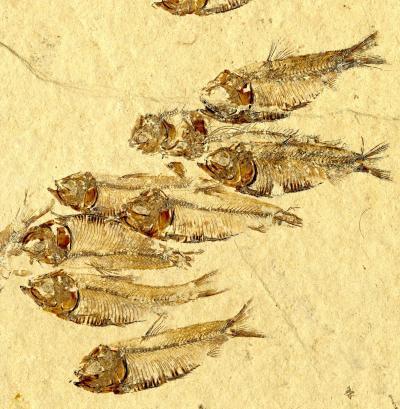According to a new, large-scale study and a brief snapshot, the mantra has been crammed into bone-bearing fish in the last major extinction event that occurred 65 million years ago.
According to Matt Friedman, the author of the study and a graduate student in evolutionary biology at the University of Chicago, today the characteristic traits of large predatory fish species, such as tuna, are now gradually decline and stand on the brink of extinction. He said: 'The same thing is happening today for similar fish. The most affected species are always great predators. '
Studies of modern fish species show that large body sizes are characteristic of predatory fish species that have slow population growth rates, while fast jaws are adaptive traits to catch prey. Agility or hiding are other fish. Fossils have provided significant evidence in favor of functional estimates, feces inside fossilized fish also provide information about their last meal.
When an asteroid collided with the earth at the end of the Cretaceous period about 65 million years ago, the earth was covered by smoky clouds and smoke. This event prevented the photosynthesis of terrestrial and marine plants, a new food chain that was at a primitive level, leading to the extinction of thousands of animals and plants, including dinosaurs. .
Scientists believe that in the process, large predatory fish are more likely to become extinct than other fish because they have a slower population growth rate, live more spread, take longer to grow. and keep only a temporary position on the top of the food chain. Today, ecologically similar fish are also less likely to thrive again after the decline in numbers due to indiscriminate fishing.
 Fossil herring in the western United States where Colorado, Utah, and Nevada meet. Herring is one of the group of bone fish that have small fish survive after extinction in the late Cretaceous, they still exist today in marine environments. (Photo: Matt Friedman)
Fossil herring in the western United States where Colorado, Utah, and Nevada meet. Herring is one of the group of bone fish that have small fish survive after extinction in the late Cretaceous, they still exist today in marine environments. (Photo: Matt Friedman)
To build a validation database for this prediction, Friedman traveled around the world to record the body and jaw size of 249 types of fossilized fish that lived in the late Cretaceous. This direct method of determination can be done with fossil fish because they can be paired together perfectly. Fish fossils are not the same as fossils of most other vertebrates that have bones, teeth and other parts of the skeleton that are often scattered and dispersed.
This is the first study to test the hypothesis and the relationship between body size, function and vulnerability of fish species during the Cretaceous extinction event. Friedman said: 'No matter how small you split, the data still shows that a big fish with a quick bite means that its fate has been decided'.
The funny thing is that the big fish today have a quick snapshot that evolved quite slowly after the Cretaceous extinction event, taking on the ecological and functional roles left by the victims of the event. Although the two groups of fish are not related, their fate may be similar.
Friedman's article on the selection of ecological morphology of marine fishes that lived in the extinction phase at the end of the Cretaceous was published in 13 PNAS papers. In it Friedman describes the results of his research frankly, because predatory fish with large bodies that are disproportionately reduced also have fossils. 'In other words, we can be convinced that these forms may be extinct, their disappearance cannot be recorded in fossils'.
However, fossilized fish are not studied by paleontologists because they are attracted to other animals, such as dinosaurs. So many types of fish evolution on a large scale are still not well understood. The fossil fish species in this study are very diverse in shape, their body length ranges from 20 feet to less than 1 inch.
Friedmen said: 'This study demonstrates that fossil data is consistent with modern diversity and development, allowing us to test which properties may be related to extinction today. . The echo of the extinction event at the end of the Cretaceous period still bounced back to 65 million years later. ' The research was funded by the Lerner-Gray Marine Animal Research Foundation, Hinds Foundation, Earth Science Foundation and Environmental Protection Agency.
 Discovered an ancient centipede fossil 99 million years old
Discovered an ancient centipede fossil 99 million years old Discovered bat-like dinosaurs in China
Discovered bat-like dinosaurs in China Discovered a 200-year-old bronze cannon of the coast
Discovered a 200-year-old bronze cannon of the coast Discover 305 million-year-old spider fossils
Discover 305 million-year-old spider fossils